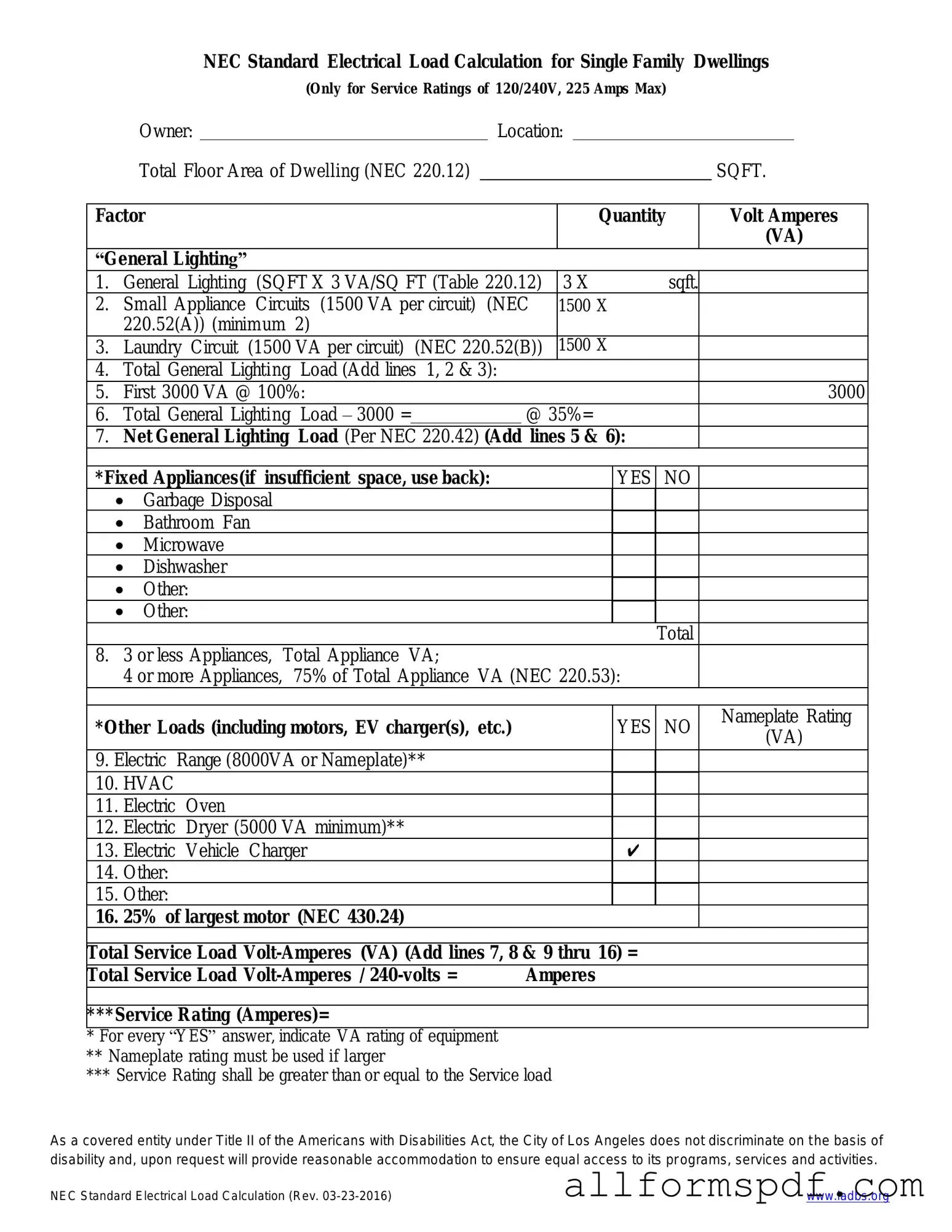Completing the LADBS NEC Standard Electrical Load Calculation form can be a straightforward task, but many individuals encounter common pitfalls that can lead to errors. One frequent mistake is not providing accurate measurements of electrical appliances and systems. It is crucial to gather precise data about the wattage of each device. Rounding numbers or estimating can result in an incorrect total load calculation, potentially leading to safety hazards or code violations.
Another common error occurs when individuals overlook the importance of including all relevant electrical loads. Some may forget to account for specific appliances, lighting fixtures, or other electrical equipment in their calculations. Each component contributes to the overall load, and missing even one can skew the results significantly. Thoroughly reviewing all electrical devices in the space is essential for an accurate assessment.
Additionally, failing to consider future electrical needs can pose a problem. Many people fill out the form based solely on their current usage without thinking about potential expansions or additional appliances. Planning for future growth can prevent the need for costly upgrades or modifications later on. Always think ahead when estimating your electrical load.
Misunderstanding the calculation method is another mistake that can lead to inaccuracies. The form requires specific formulas to determine total load, and confusion about these calculations can result in errors. It is important to familiarize yourself with the guidelines provided in the form and ensure that you are applying them correctly.
Moreover, neglecting to double-check the completed form is a mistake that can have serious consequences. After filling out the form, take the time to review all entries for accuracy. Simple typographical errors or miscalculations can lead to significant issues down the line. A careful review can save time and resources.
Finally, many individuals fail to seek assistance when needed. Whether it is from a licensed electrician or a knowledgeable friend, asking for help can clarify any uncertainties. There is no shame in seeking guidance to ensure that the form is completed correctly. Remember, getting it right the first time can save you from future complications.
